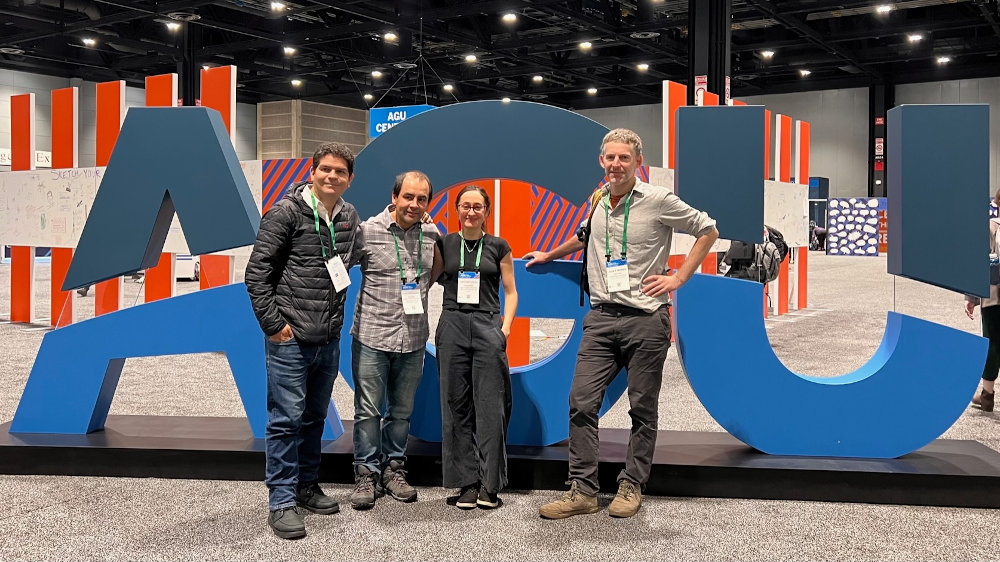Two posters at AGU 2022
by Mauricio Zambrano-Bigiarini
During the week of December 12 to 16th, 2022, I participated in the Conference American Geophysical Union Fall Meeting (AGU 2022), held in the city of Chicago ( USES). This is the most important conference worldwide in the area of Earth Sciences, and it is held annually.
On this occasion, I presented two posters:
1) An R package for efficient analysis of raster time series. hydroRTS is a new package for the R statistical environment that is about to be submitted to CRAN. This package allows you to work efficiently with large amounts of gridded data that have an hourly, daily, monthly, or annual time frequency. This work summarizes a large amount of work that I have carried out since 2013. However, only the collaboration of Civil Engineer Sebastián Bernal, who graduated in Civil Engineering in 2022 from the Universidad de la Frontera, made it possible to organize systematically and adequately document a set of functions that are useful to the global community of Hydrologists and Earth Scientists. This collaboration was only possible thanks to the funding provided by the Chile-China international collaboration project NSFC 190018, directed by Dr. Zambrano-Bigiarini.

2) hydroMOPSO: A Versatile Multi-Objective Optimization R Package for Calibration of Environmental and Hydrological Models. hydroMOPSO is a new package for the R statistical environment that is about to be submitted to CRAN. This package allows you to perform a multi-objective calibration of any hydrological/environmental model (actually, a model from any subject area), whether this model is implemented in R or requires to be executed from the system console in a local PC or in a server. This package has been developed by Civil Engineer Rodrigo Marinao, who is a graduate of Civil Engineering at the Universidad de la Frontera, student of the Master in Engineering Sciences of the same house of studies, and research assistant at the Center for Climate and Resilience Research (CR2). The collaboration with Rodrigo Marinao started during the Hydrology course in the Civil Engineering degree, and has continued uninterrupted since then. This work also received funding from Chile-China international collaboration project NSFC 190018.

Finally, during this conference I took the opportunity to discuss various topics with Dr. Camila Álvarez Garreón (CR2), Dr. Mauricio Galleguillos (U. Adolfo Ibáñez) and Dr. Juan Pablo Boiser (CR2), who also participate in the project of international collaboration Chile-China NSFC 190018.

Subscribe via RSS
